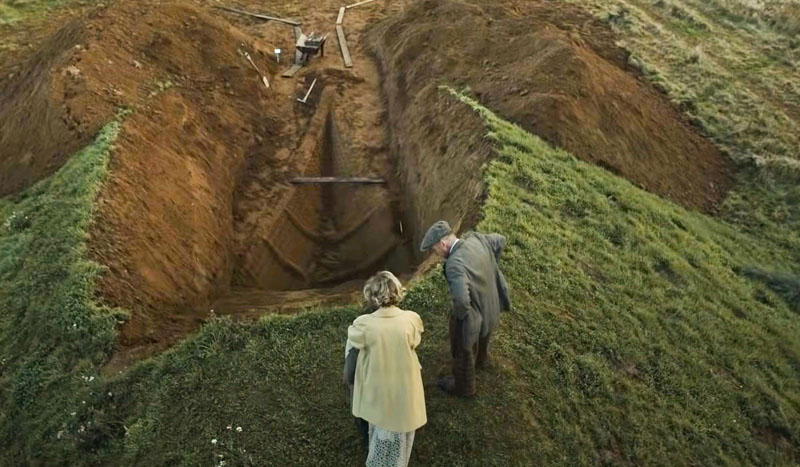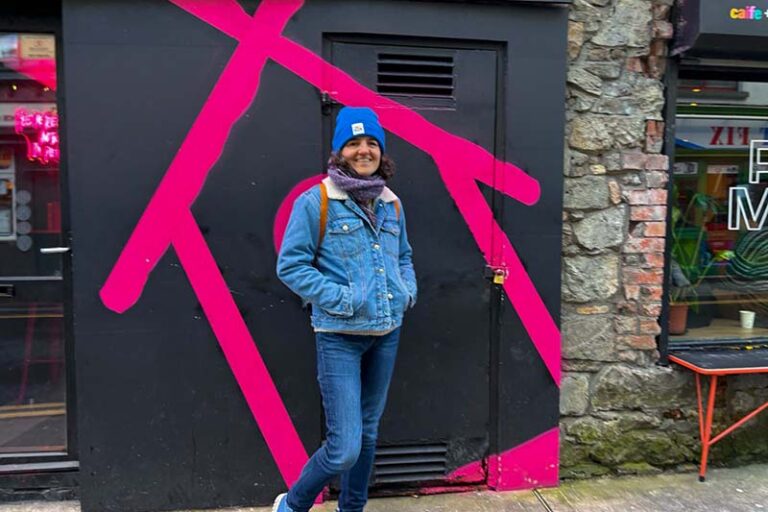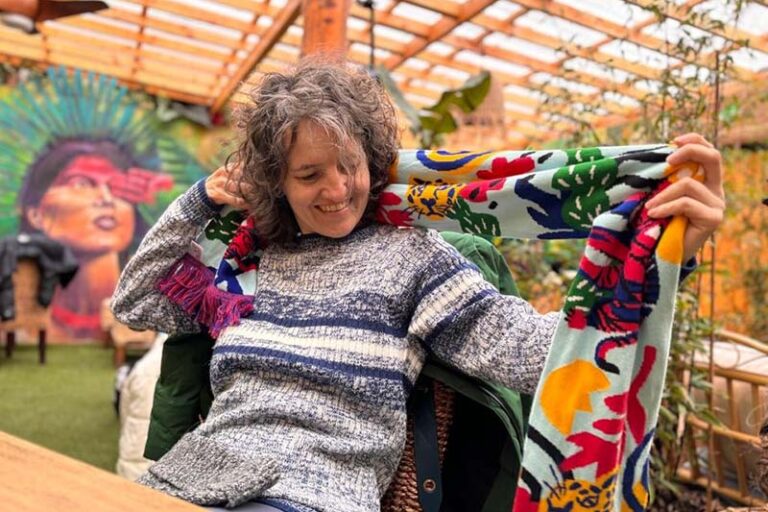This post is also available in:
 polski (Polish)
polski (Polish)
Do you know that Archaeology brought me to Ireland? Ten years ago, I was working on the excavations, when the rain dripped down on my back. Recently The dig I have seen on Netflix, refreshed my thrill of explorer and push me to discover more about Basil Brown with other characters in this curious archaeological story. I dived into British sources and found interesting information on the British Museum blog. Also I discovered a great blog by the local historian from Ipswich Caleb Howgego. Step by step I had verified the facts and myths, but the true answer came at the end in the excavation report, published in 1940 in the Journal of Antiquity.
Passion for history
Basil Brown, was a British amateur archaeologist who discovered in 1939 the golden treasure in the burial of an Anglo-Saxon ship of VII century in Sutton Hoo, an East Angland county Suffolk. It is the greatest finds was ever discover in UK, and the treasure hailed as Britain’s ‘Tutankhamun’. Basil in the letter to his wife describe it as a find of a lifetime.
The movie begins at summer 1938, when Brown played by Ralph Fiennes is hired as a freelancer by aristocrat Edith Pretty (Carey Mulligan) who wanted to see what is hidden under the burial mounds on her land, and Ipswich Museum suggested Basil Brown. He took this job enthusiastically, and were cycling every day from Rickinghall, where he lived. In the movie he stayed in rented room. Basil worked with his wife May on the family farm, but he had extraordinary interest for digging into past human activities and history. He knew the soil perfectly well. The soil ingredients, its colour, and consistency are very important during archaeological searches.
Even Basil had no formal qualifications, he was self-taught and had amazing experience. In his notebooks from excavation he made map of arachnological founds, and his contribution to British archaeology is huge. An interview about Basil notebooks you can find here.

When I watched in the film how he was passionately digging the levels of soil, it reminded me of digging myself with a shovel, and sometimes just like Brown with a pickaxe, and finally brushing away with the thin side of the earth with a trowel, and finally clean the founds still not moving from the site with a brush. The full-size skeleton of the ship was fantastically reconstructed (27 meters), and the research from British Museum was bowled of it were he visited the set. He shared all information about the treasures with production design Maria Djurkovic and artistic director Karen Wakefield.
Guy Maynard the director of Ipswich Museum was regularly visited Sutton Hoo. Seeing the ship emerging from the soil by Brown, he called in Charles Phillips from Cambridge. After that, the film’s action become more dramatic. As an archaeologist, I have to admit that such situations often accompany discoveries. Archaeology is not only romantic victory, but it also bureaucratic and proprietary thing, sometimes rivalry, and also struggling with nature when to much water from the rain can sink the site. In my opinion, this movie presents the excavations honestly. Even the wooden wagon in which Basil and Edith drink their tea reminded me of exactly our tin portable cabin. My favourite scenes of the film was when the archaeologist Peggy Piggott (Lily Jones) discovered the first piece of gold from the burial- a garnet encrusted scabbard mount. This magical moment was completely true, it took place on 21 July 1939, initiated other amazing discoveries.

Myths
However, there are things that are different from the facts. And maybe it won’t be strange, but they are related with famous an important persons, including the famous English archaeologist. First, Edith Pretty, was 56 years old at the time of the excavation and she was 5 years older than Basil Brown. In the movie she is presented as a woman in 36 s, but Ralph Finnes is 23 yeras older than her. I just could not believe when I read the real date of her birth, why an older actress was not involved in this role.
Peggy Piggott, esteemed archaeologist and specialist in prehistory, was also falsified. First of all, at the time of the Sutton Hoo excavations, she was an experienced archaeologist, not only her husband’s assistant, as in the movie showed. The British archaeological community was disappointed about it, and archaeologist Rebecca Wragg Sykes said in The Times– that this way the film ignored the really famous archaeologist.
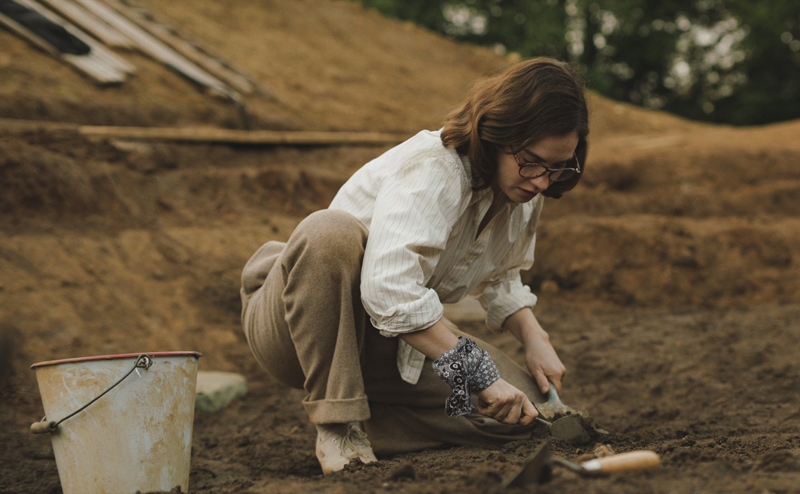
Peggy, also knowing as Margaret Guido, came to the excavation with her husband Stuart Piggott (also archaeologist), but it was not their honeymoon at all (as it is in the film said), and she had no affair on the excavation. The photographer Rory is a fictional character. Her husband had also any affair. Yes, the couple divorced, but 15 years after excavation.
The movie also noted that Basil Brown was not mentioned as the discoverer of the treasure. It did take a long time for his name to appear next to the treasure on display at the British Museum. In fact, the first full report of the finds, written in 1940 by Charles Phillips in the Journal of Antiquity, mentioned that Basil Brown as a first started digging burial mounds, and he uncovered the part what later proved to be the forepart of the ship.
However, The Dig is valuable movie because give us a discovering thrill. But most of all, brings to light an archeologist Basil Brown, about whom we might have not heard if not that movie. Although, as a journalist and archaeologist, I would have preferred the facts.
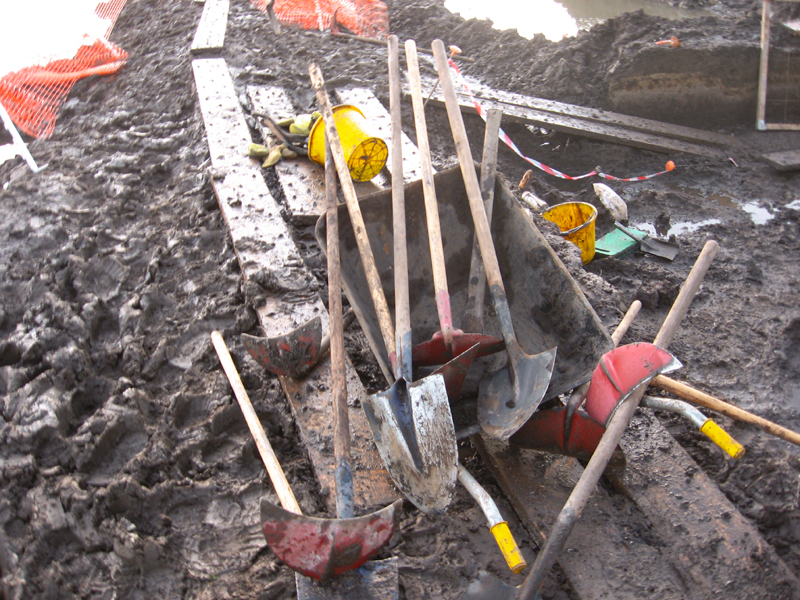
Meanwhile, I will keep my memories when I discovered pieces of very old fabric on the excavation in County Carlow, Ireland. And it was for me such an exciting moment as discovering a gold treasure. Because when you are digging for traces of the past, everything is thrilling. The archaeology is a fantastic adventure, and I hope to come back to the excavations one day.

